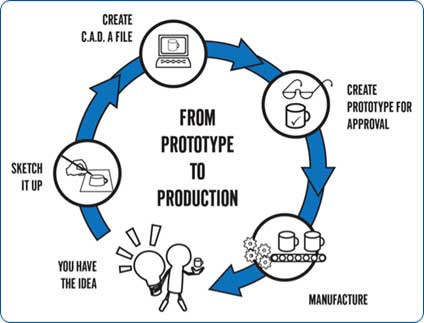 Profit margin and keeping manufacturing costs to a minimum are typically the top concerns companies have when creating a new product. However, quality can’t be sacrificed in order to achieve this. To get started, project managers should come up with a rough estimate called the cash flow statement. One way for manufacturers to go about creating this statement is to compare the cost of creating their product to similar products that are already on the market. It’s essential to research the materials used in the manufacturing process and not the final product itself.
Profit margin and keeping manufacturing costs to a minimum are typically the top concerns companies have when creating a new product. However, quality can’t be sacrificed in order to achieve this. To get started, project managers should come up with a rough estimate called the cash flow statement. One way for manufacturers to go about creating this statement is to compare the cost of creating their product to similar products that are already on the market. It’s essential to research the materials used in the manufacturing process and not the final product itself.
Don’t Overlook Common Start-Up Manufacturing Costs
When creating a rough estimate, many companies fail to account for all start-up expenses. These costs may include design, development, use of tools, and initial orders with a supplier. Including these costs allows manufacturers to create a project budget and track their costs from the beginning of the manufacturing process until the product is released to the public. Once the design team is ready to create a detailed estimate, they should be certain to include these items as suggested by O’Connor Technical Systems:
- Parts List
- Production levels per year
- Production levels per day
- Plan for response to changes in demand
- Cost of labor
Specific Cost Considerations from Prototyping to Manufacturing
In some ways, designing a prototype for a new product is the easy part. That is because there are multiple things to consider before the manufacturing process can begin. The type of materials to use is the first on the list. For example, will the product packaging be made from paper or plastic? Will the product itself be made from cloth, metal, or steel? It’s a fine balance between keeping costs to a minimum and choosing materials that won’t fall apart shortly after the consumer purchases the product. Also, you have to plan if what type of machine andplasma cutting tablethat you’re going to use for the manufacturing process.
Another huge consideration is how much money is available to put down to secure a supplier and start manufacturing the new item. Company managers must remember that it may be several months before they earn anything in way of return on investment. The process tends to go more smoothly when the factory partner is located nearby. This allows the people manufacturing the product an opportunity to visit the site to see how it operates as well as stay in closer communication. A local manufacturer also helps reduce shipping costs. According to Autodesk’s Line//Shape//Space publication, “Unless your factory partner is within driving distance, you will be doing a lot of business with FedEx to get samples back and forth.”
Reducing the Cost of Goods Sold
To improve the bottom line, companies manufacturing a new product must spend time researching ways to decrease the following costs. Amongst over a dozen cost-cutting measure, there are several related to goods and manufacturing:
- Storage: Items that have not yet sold need to be stored, preferably on-site. If that’s not possible, a team leader needs to compare the costs of several nearby storage facilities.
- Transport: Moving the product to an off-site location or taking it to a shipping center requires an investment in trucks and fuel. Maximizing fuel efficiency by cutting out unnecessary trips reduces costs as does keeping up with routine maintenance on the vehicles.
- Shipping: The cost of sending the product to retailers can accumulate quickly. It’s in the company’s best interest to negotiate a volume discount with a major carrier.
These steps may appear time-consuming, but skipping them could mean losing money on the new product instead of earning it.







